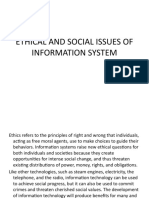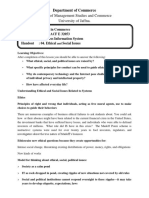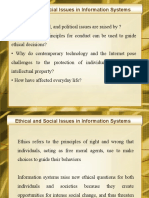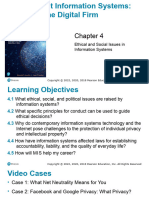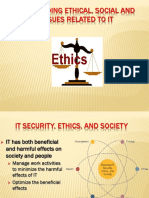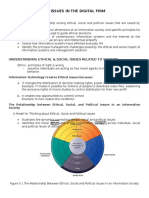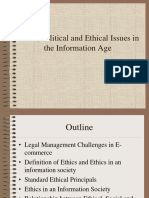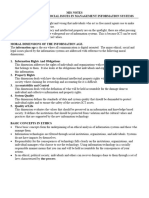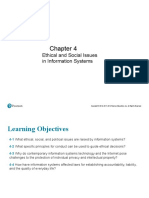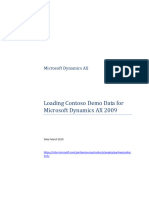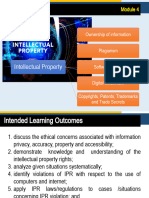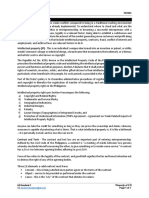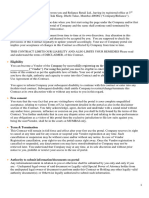0% found this document useful (0 votes)
57 views19 pagesMIS Assignment2
The document discusses ethical and social issues related to information systems, emphasizing their importance in modern organizations. It outlines key technology trends, moral dimensions, and ethical principles that guide the responsible use of information technology. Additionally, it addresses real-world dilemmas and the implications of information and property rights on quality of life and health risks.
Uploaded by
darshanshakya111Copyright
© © All Rights Reserved
We take content rights seriously. If you suspect this is your content, claim it here.
Available Formats
Download as PDF, TXT or read online on Scribd
0% found this document useful (0 votes)
57 views19 pagesMIS Assignment2
The document discusses ethical and social issues related to information systems, emphasizing their importance in modern organizations. It outlines key technology trends, moral dimensions, and ethical principles that guide the responsible use of information technology. Additionally, it addresses real-world dilemmas and the implications of information and property rights on quality of life and health risks.
Uploaded by
darshanshakya111Copyright
© © All Rights Reserved
We take content rights seriously. If you suspect this is your content, claim it here.
Available Formats
Download as PDF, TXT or read online on Scribd
/ 19




